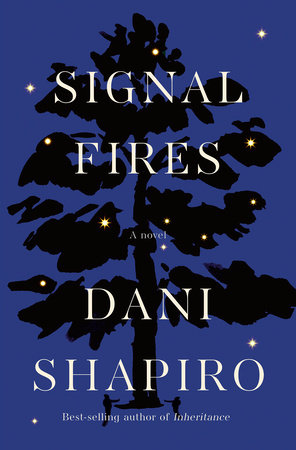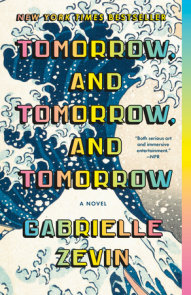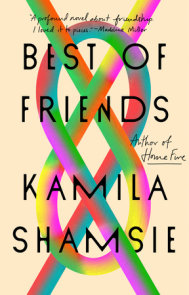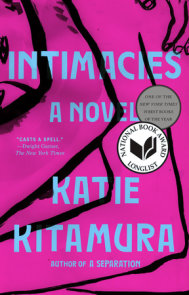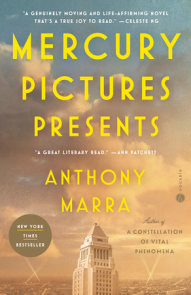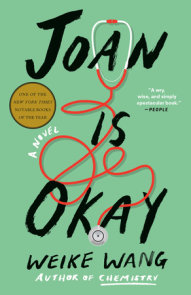READERS GUIDE
A stirring meditation on the chances and choices that shape a life, Signal Fires marks the acclaimed storyteller Dani Shapiro’s return to fiction, on the heels of her bestselling memoir, Inheritance. In this tender, compelling novel, siblings Theo and Sarah Wilf share a secret after a car accident claims the life of a friend when they are teenagers. As the years unfold, their kind-hearted parents, Ben and Mimi, try to move past that tragic night while Theo and Sarah bear emotional scars that run deep. When a young couple moves in next door many years later, their stargazing son provides a wondrous window on the world, even as the aging Wilfs confront a new chapter of loss.Sure to spark meaningful conversations about family ties that both sustain and constrict, Signal Fires provides your book club with rich material to explore. The questions that follow are designed to enrich your discussion. We hope this guide will enhance your experience of Dani Shapiro’s haunting illumination of the legacies that become woven into our identities.
Questions and Topics for Discussion
1. How would Sarah and Theo’s lives have been different if she had told the truth about the circumstances of the car wreck? What personality traits were revealed in Sarah and Theo during the novel’s opening scene? How did these traits shape the outcomes of their lives?
2. How does the novel’s oscillating timeline reflect the human experience of looking back on the past and making hopeful predictions about the future? What was it like to learn about the characters through moments that weren’t linear? What cultural shifts were captured in those five decades? What remained the same throughout the years?
3. Ben’s profession puts him at the center of moments of life and death. Sarah’s career is anchored in storytelling, while Theo masters the art of preparing “comfort food with staying power” (207). How do these professions reflect essential aspects of Ben and his children?
4. The author writes lovingly of the Wilf house on Division Street. What can we discern about the Wilfs by observing their possessions, particularly when Sarah arrives to find the artifacts in a state of disorder? What is the significance of the fact that Theo spent many years estranged from the concept of home? What do the artifacts in your house indicate about the places you have called home?
5. Lost together, what makes Waldo and Mimi ideal companions during those dark hours? How does the experience distill what matters most to them, and to the family members who are searching for them?
6. As a young adult, Waldo invokes quantum physics to explain the mystical interconnectedness of all things (including humanity). To what extent is his connection to Ben determined by fate, versus the effort they make to sustain a bond over the years? Why is Waldo’s interest in the heavens so difficult for Shenkman to appreciate? What is Alice’s most enduring legacy for her son?
7. On page 128, Sarah thinks of lives as books divided into chapters, and she thinks about Peter’s observation that second acts in screenplays should always have two major plot points. What are the major plot points and chapters of your life? Who do you consider to be the author of your life story?
8. Sarah lives in perpetual fear that Peter will find out about her infidelity. What is at the root of her masochism—experience in which she is abused and shamed? Why isn’t she able to feel satisfied with Peter, “a simple guy, a nice guy who hasn’t been able to catch a break” (page 131)? How do the characters in Signal Fires contend with guilt, even if the guilt is unwarranted?
9. Theo loves being an uncle to Syd and Livvie. As the girls approach the cusp of adulthood, the same age when he was reeling from tragedy, how is he able to make peace with the fact that it’s impossible to predict what lies ahead?
10. In the final portraits of Shenkman and Ben, we see two aging men from the same neighborhood choose two very separate retirement paths. Shenkman lives in isolation in Florida. Ben enjoys the companionship of family on the west coast. What accounts for these different outcomes? How do their pandemic experiences compare to yours?
11. The novel’s epigraph, from Carolyn Forché’s poem “Mourning,” calls for lighting signal fires “wherever you find yourselves.” Who lights the signal fires in the novel? Who heeds them and takes action?
12. What are the fundamental reasons for Ben and Mimi’s happiness in marriage, and for the sadness and frustration in the Shenkmans’ marriage? What is the effect of the novel’s closing line regarding the Wilfs, “You would hope that they know how lucky they are, how blessed”?
13. Discuss the portraits of parenting that are offered in the novel. What aspects of motherhood and fatherhood resonated with you? Do the children do a good job of becoming caregivers to their own parents later in life?
14. Family secrets have played a key role in many of Dani Shapiro’s books. How does Signal Fires further expand upon the theme of unspoken truths and hidden turning points in her other novels and memoirs that you have read?
Suggested Reading
Sarah Adlakha, She Wouldn’t Change a ThingRachel Cusk, Arlington Park
Matt Goldman, Carolina Moonset
Alice Munro, Dear Life: Stories
Jackie Polzin, Brood
Sally Rooney, Normal People
Alex Schulman, The Survivors
Emma Straub, All Adults Here
Anne Tyler, French Braid
Gabrielle Zevin, Tomorrow, and Tomorrow, and Tomorrow









